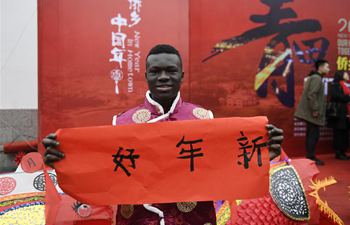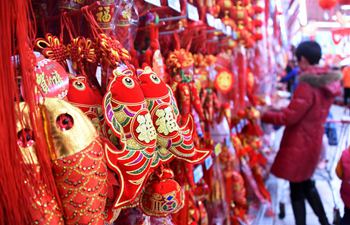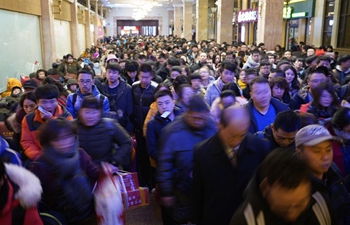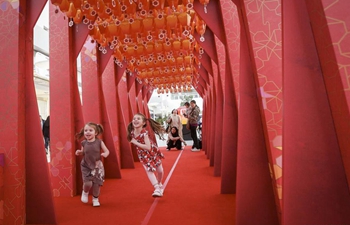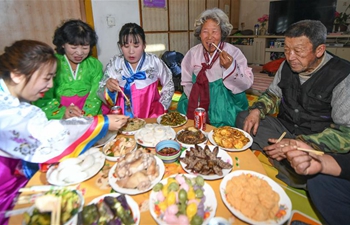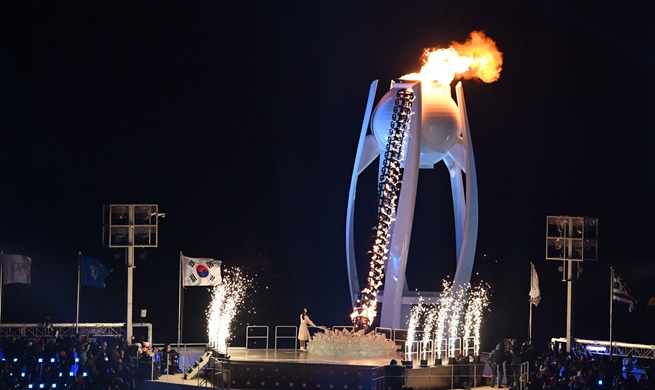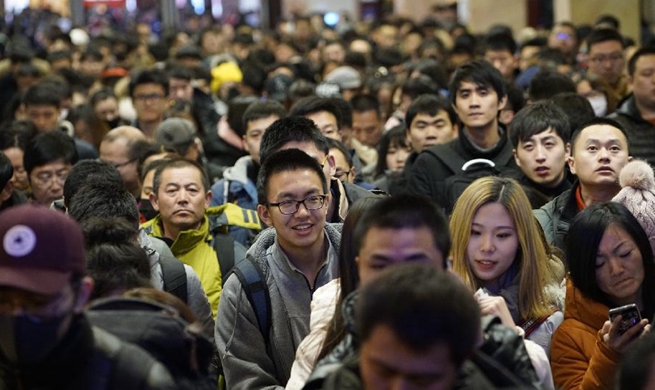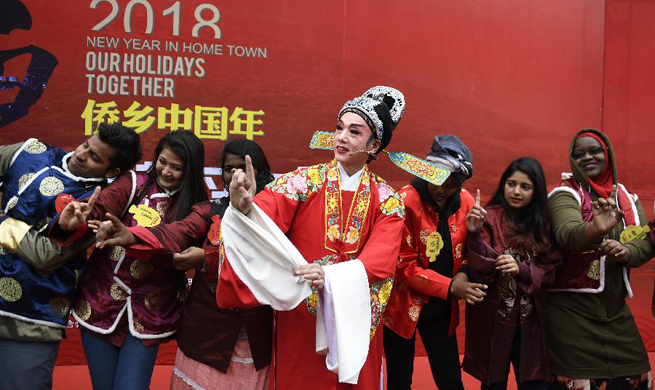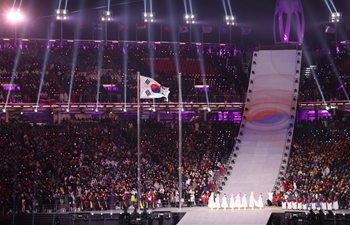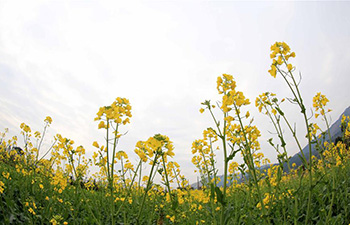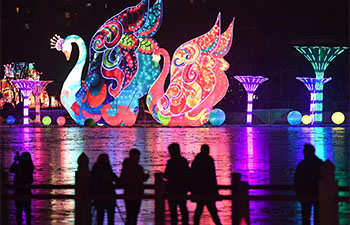By René Quenallata Paredes
LA PAZ, Feb. 10 (Xinhua) -- Tradition, brotherhood and mayhem are the elements that bring the crowds to Bolivian carnivals, with each region of the country offering its own twist.
These includes the traditional "comadres" in Tarija, the "folclorica" of Oruro, the "farandula" of Santa Cruz, the "Corso de Corso" in Cochabamba and the "Jisk'a Anata" in La Paz.
In an interview with Xinhua, sociologist Mario Matos explained that anthropologists had found these cultural traditions stretching back through generations.
Bolivia's carnival celebrations began with the "Thursdays of compadres and comadres." In Tarija, people in every village met up in the houses of friends or family to exchange baskets full of fruit and sweets as presents.
However, in the region of Oruro, the carnival from Feb. 9-12 is focused around the great parade of Socavon.
On Saturday, at least 80,000 people, including musicians and dancers, mobilized along the streets while over 200,000 spectators watched on from the entrance to the city.
"Each year, this city enters the spotlight of all Bolivia and a large part of the world, because the marvellous carnival of Oruro enters into full swing," commented Matos.
Matos explained that the wild party of Oruro was declared in 2001 and was a Masterpiece of the Oral and Intangible Heritage of Humanity by UNESCO.
The folkloric groups, who come from across the country, prepare their parades and dances throughout the year.
The Socavon march winds its way for several kilometers, before concluding at the church of the Virgin of Socavon, where it is honored with dancers in spectacular outfits.
Matos told Xinhua that the 2018 edition would see the participation of over 60 folkloric groups, leading dances with names such as diablada, caporales, morenada, suri-sicuris, llamerada, cullawada, waca-waca, pujllay and tinku.
Other emblematic parties during the Bolivian carnival season happen in the eastern city of Santa Cruz where participants give free rein to their creativity.
The carnival of the capital, La Paz, is another eagerly awaited event, with over 55 groups competing for the attention of the crowd.
The Jisk'a Anata ("little party" in the Aymara language) will begin on Feb. 12, as one of the most important indigenous demonstrations of culture of the carnival season.
Indigenous associations from different parts of the department of La Paz will come to take part in the parade.
Matos recalled that, back in the 1940s, the Monday of the carnival season was reserved for competitions of typical orchestras and national dances.
Finally, the carnival of the central city of Cochabamba will take part in Feb. 17, where over 89 groups will take part, ranging from indigenous shows, military units and around a dozen beautifully decorated floats.
The event called Corso de Corsos or Carnival of Concord closes Bolivia's carnival season, bringing to an end a time dedicated to the country's diversity in dance and music.





